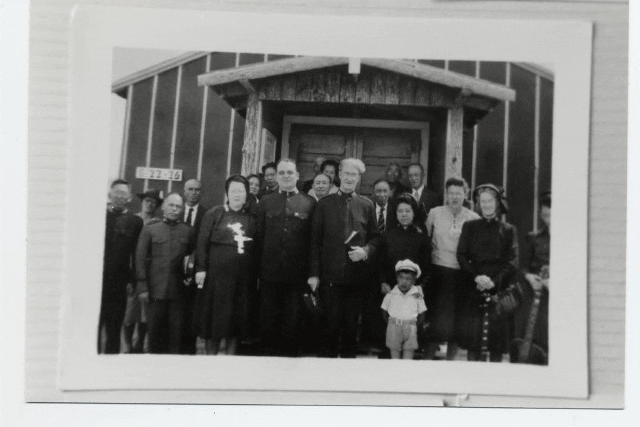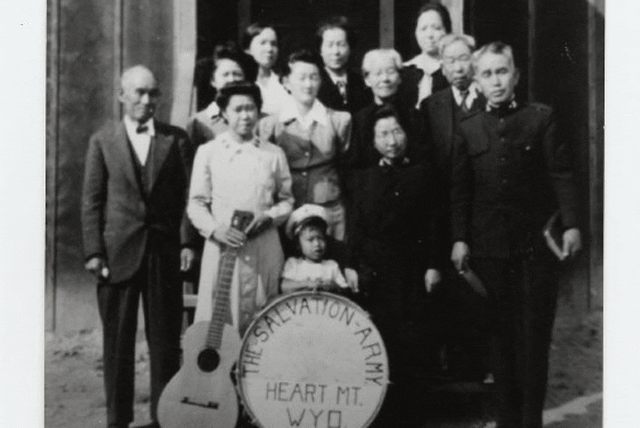Japanese Salvationists continue to worship in internment camps during World War II.
By Clinton Trimmer, Captain –
With the outbreak of war in December 1941, mistrust and fear swept through the United States. Americans of Japanese descent felt the hysteria particularly keenly as even lifelong neighbors began to question their loyalty. The anxiety following the Pearl Harbor attack led to Executive Order 9066, issued in February 1942, allowing the U.S. military to detain any person they deemed an enemy alien. This order applied to citizens, non-citizens, clergy and laity.
The Salvation Army Western Territory had every right to be concerned about how the exclusion of enemy aliens—which is how people of Japanese descent were classified—was going to affect its ministry. At that time, the Japanese Division was still coping with the loss of its beloved commander, Major Masasuke Kobayashi, who had been promoted to Glory the previous year. He left behind the division that he helped form and had led for nearly three decades. With the outbreak of war, confusion and uncertainty added to the Japanese Salvationists’ grief. Soon a new trial began, as the U.S. Army began relocating them to camps and centers further inland.
The Abe family from San Francisco were among the first to arrive at the camp in Wyoming, which had opened Aug. 11, 1941. When the Abes arrived on Aug. 20, they found huts still constructed with tar paper; there hadn’t been enough time to use proper siding. Although they were internees, the Abe father, Tozo, and the mother, Florence, saw an opportunity to continue God’s call to serve suffering humanity.
Tozo and Florence Abe were Salvation Army officers, and they were about to begin the work of The Salvation Army inside the camp. Another set of Salvation Army officers, the Matsuchimas, arrived one later, on Aug. 21, from Sacramento, California. These dedicated officers quickly got to work in their new appointment.

As the ranking officer, Tozo Abe was in command of the small force, which quickly petitioned the camp administration to recognize The Salvation Army as one of the Christian denominations operating there. Although the majority of internees were not Christian, a significant minority were, and they wanted to practice their faith. The camp administration allowed The Salvation Army to use the shared church offices close to the Abes’ hut. The corps programs, however, would not fit in that small space, so they began to hold meetings a few blocks away in one of the community hall buildings.
While some of the other Christian denominations may have perceived the use of a nonreligious-looking building an impediment to worship, the Salvationists—accustomed to rented halls and make-shift worship spaces—probably felt right at home. Soon many standard Salvationist programs were taking place: Sunday worship services, youth programs and Home League programs. Youth councils were held in Billings, Montana, the closest corps outside the camp.
When the last internees left the camp in November 1945, Heart Mountain had been operating for four years and three months. The Abes were one of the last families to leave, just as they had been one of the first to arrive. Along with the Matsuchima family, they had been able to serve their fellow man in the name of Christ through their calling as Salvation Army officers.












